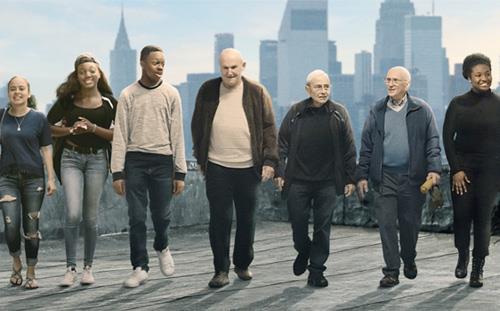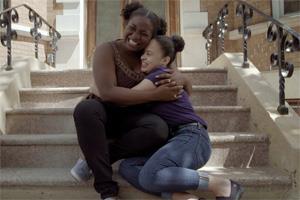
The Bronx might be the best-known borough in America, which is not the same as saying it's the most admired.
For a lot of Americans over a lot of years, The Bronx might be summarized something like this: great Italian food if you live to enjoy it.
George Shapiro, a Bronx native who grew up to produce TV shows like Seinfeld, takes a much sunnier view in The Bronx, USA, a personal-journey documentary that premieres Wednesday at 9 p.m. ET on HBO.
Shapiro, now 88, returns to The Bronx with a camera crew and films several of his old haunts, along with a surprising number of old friends.
 This might, therefore, sound like the film of great interest to everyone who grew up in the Bronx, but only marginal interest to all the rest of us who didn't.
This might, therefore, sound like the film of great interest to everyone who grew up in the Bronx, but only marginal interest to all the rest of us who didn't.
On the contrary. Shapiro focuses on three elements that broaden his story well beyond the Bronx Alumni Association.
First, he doesn't dodge the checkered reputation of The Bronx. He tackles it, juxtaposing the cautionary tales of the past with what he portrays as a vibrant present in which The Bronx's Fort Apache battleground image is supplanted by streets no more threatening than those in any other American city.
In fairness, it should be noted here that Shapiro does not spend time on the South Bronx, the area whose blocks and blocks of burned-out buildings gave the whole Bronx much of its notoriety in the 1970s and 1980s. While there are passing comments about that area coming back, it still has a ways to go.
Second, Shapiro intersperses his own memories with those of other people who grew up in the Bronx, like Hal Linden, Melle Mel, Robert Klein, Melissa Manchester, Carl and Rob Reiner, and General Colin Powell.
Powell retains his customary reserve, but even he can't keep from cracking a smile at some of his memories.
Some of the others probably romanticize their Bronx childhoods a bit, as many of us tend to do. Still, the stories about stickball and the camaraderie in apartment buildings and the row of Mom-and-Pop food stores along Arthur Avenue conjure good times you didn't have to grow up there to understand.
Third, and perhaps smartest, Shapiro and two friends return to their alma mater, DeWitt Clinton High School, where they were Class of '49, to meet with a dozen or so students from the Class of 2017.
The younger students get a lot of screen time and deserve it. Most of them are in the same friend group, and it's a fascinating picture of contemporary America, packed with first- or early second-generation immigrants from all over the globe: Hungary, Ghana, the Caribbean.
 One student, Danielle (right), is president of the senior class. Most are headed for college, which tells us why their families came to America in the first place. They wanted their children to have opportunities unavailable in their native countries, and these children have taken that opportunity as a mission.
One student, Danielle (right), is president of the senior class. Most are headed for college, which tells us why their families came to America in the first place. They wanted their children to have opportunities unavailable in their native countries, and these children have taken that opportunity as a mission.
They may sit around eating pizza and snapping selfies, but these students offer as solid a future as any country could wish for. One student, Estefany (above, with Danielle), is a major fan of the show Hamilton, and the message on her mortarboard at graduation is taken from that show: "Immigrants: We Get The Job Done."
When Shapiro and his friends sit down and talk with the students, the older men recall that their Bronx, 80 years ago, was also an immigrant community. A starter neighborhood, if you will, largely Italian and Jewish, at the time.
Several of Shapiro's friends lament the changes in the culture now, where young kids don't just round up a dozen friends and play in the streets and parks all day. There's less of a feeling of neighborhood, they say.
 Seeing the Clinton students argues against that concern. They may not spend their summer afternoons with a broomstick and a Spaldeen or playing Johnny-on-the-pony, but they're still getting together.
Seeing the Clinton students argues against that concern. They may not spend their summer afternoons with a broomstick and a Spaldeen or playing Johnny-on-the-pony, but they're still getting together.
One of the female students seems to dribble a basketball everywhere she goes, and playgrounds with hoops – but no nets, of course – seem as ubiquitous as pizzerias.
The Bronx, USA paints New York's northernmost bureau as a classic melting pot. It's lively, diverse, and in places, even rather scenic. It's bisected by subways and elevated trains and anchored by landmarks like the Bronx Zoo, Fordham, and Yankee Stadium.
Shapiro tells a story as he takes his tour, and he paints a picture of a place where the future looks as interesting and bright as the past.